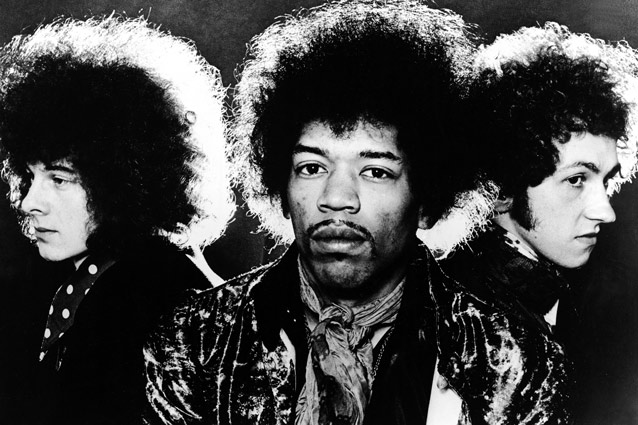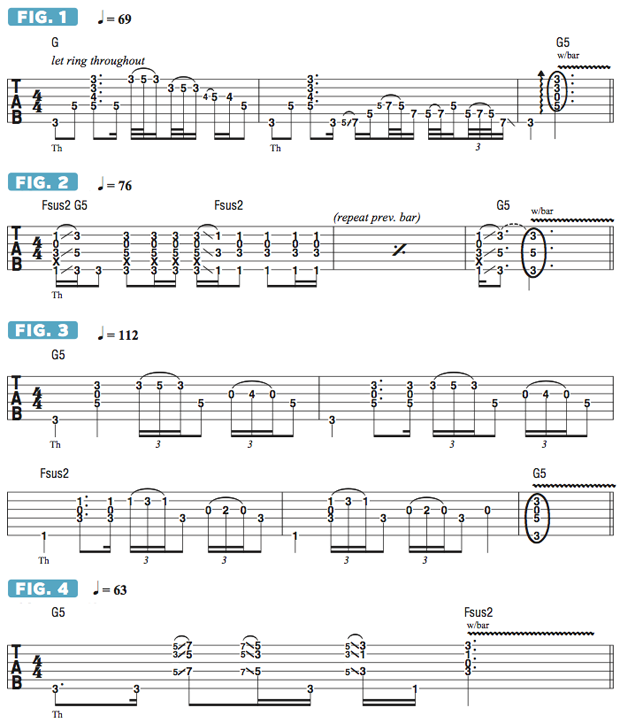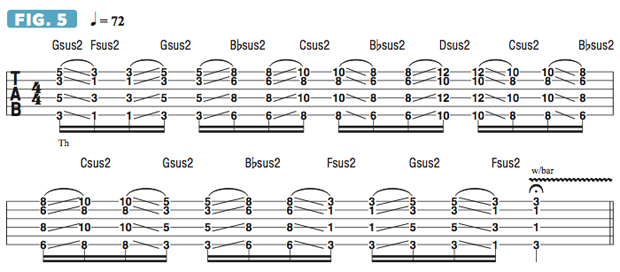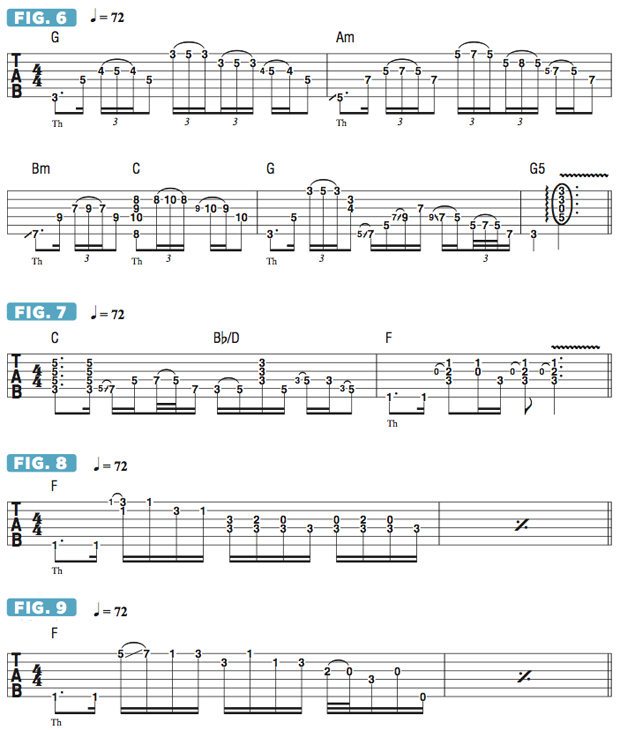Examining Jimi Hendrix's Rhythm-Guitar Genius
Examine Hendrix's genius within the realm of rhythm guitar.

Jimi Hendrix's stature as rock's greatest guitarist is by now an absolute and indisputable fact. In this edition of "In Deep," I'll examine his genius within the realm of rhythm guitar.
Let’s begin with a breakdown of the intro to the live version of “Little Wing,” transcribed in this issue [see page 136 of the December 2011 issue of Guitar World]. Before we begin, keep in mind that, as was his nature, Jimi never played any song exactly the same way twice.
Live or in the studio, he always strove for spontaneously inspired performances of every song. For guitarists, this offers a vast treasure of musical lessons to be learned when studying any one of Hendrix’s compositions.
This version of “Little Wing,” recorded at what is acknowledged as the Jimi Hendrix Experience’s greatest live performance—February 24, 1969, at London’s Albert Hall—differs in many subtle but fascinating ways from the studio track heard on Axis: Bold As Love.
In the pickup and through bar 1, Jimi first strikes muted strings by lightly laying his fret hand across the fretboard. This is followed by an expressive slide down from the 12th fret; Jimi barres across the top two strings while lightly fretting the sixth string at the 12th fret by wrapping his thumb over the top of the fretboard.
Across beats three and four, he works off a 12th-position Em7 chord shape, striking different pairs of strings in conjunction with single notes to create a “chord/melody” effect.
In bar 2, Jimi plays a third-position G major chord by fretting the sixth-string bass note with his thumb and choosing not to barre the index finger across all six strings or fret the A string with the ring finger, which frees up his pinkie to embellish the chord with fast hammer-ons and pull-offs on the G and high E strings. The same approach is used for bar 3 over Am.
Notice how he moves smoothly from sounding pairs of strings to single notes while weaving an evolving and forward-moving rhythm part. Back over Em7 on bar 4, Jimi uses the seventh-position shape to execute a series of delicate hammer-ons and pull-offs, setting up the chord change to Bm in the next bar, which is also played in seventh position.
Using Bb to shift down to Am in fifth position, on beat two he begins with a ring-finger barre across the D, G and B strings at the seventh fret to hammer up to the ninth fret on the D string with the pinkie. This is followed by a full arpeggiation of C on beat three into incorporation of C/E on beat four, sliding up to E on the A string’s seventh fret.
Bar 7 features Hendrix’s signature “sliding sus2” voicings, as Gsus2 slides up to Asus2 and then down to Fsus2. Though the thumb is used to fret the low bass notes throughout, keep this finger loose as to limit the amount of pressure that the palm of the hand exerts against the back of the neck. In bars 8 and 9, Jimi utilizes fifth-string-root voicings of C and D major, wrapping up the intro with chord-melody figures based on D/F#.
Let’s now expand on the rhythm techniques Jimi uses on this version of “Little Wing.” In FIGURE 1, I begin with the same G major voicing found in bar 2, but I incorporate more elaborate hammer-ons and pull-offs on the top three strings as well as utilize quick finger slides and hammer-ons based on the G major pentatonic scale (G A B D E).
Another great example of Jimi’s inventiveness with this chord form is heard on his Monterey Pop version of Bob Dylan’s “Like a Rolling Stone.” In FIGURE 2, I fret only the sixth, fourth and second strings while sliding between G and Fsus2 chord voicings, incorporating the open G string throughout to provide a powerful sustaining quality.
Similar in execution is Jimi’s rhythm part to the intro and verse sections of “Love or Confusion” from Are You Experienced. In FIGURE 3, I emulate this part by adding quick hammer-ons and pull-offs on the B and G strings within both the G5 and Fsus2 voicings. The “sliding sus2” chords of “Little Wing,” alluded to in FIGURE 4, also appear in another great Hendrix ballad, “Castles Made of Sand.” FIGURE 5 offers an extended version of sliding these chord forms up and down the fretboard.
Now let’s apply these techniques to a few chord progressions. In FIGURE 6, I move from sixth-string-root G, Am, Bm and C voicings back to G while adding quick hammers and pulls within each voicing. In FIGURE 7, a similar approach is taken for C-Bb-F along the lines of Hendrix’s classic “The Wind Cries Mary.” Live versions of this song reveal great inventiveness over the one chord, F, along the lines of FIGURES 8 and 9.
In FIGURE 10, fifth-string-root voicings are used to illustrate other chord embellishment ideas. As always, feel free to experiment with your own inventions once you have these techniques firmly under your fingers.
The last example, FIGURE 11, illustrates a few more commonly used Hendrix techniques for embellishing a sixth-string-root chord, with quick hammer/pulls on the G string followed by a chord resolution to A/C#. You’ll hear great examples of this on Jimi’s “Bold as Love.”




Get The Pick Newsletter
All the latest guitar news, interviews, lessons, reviews, deals and more, direct to your inbox!
Guitar World Associate Editor Andy Aledort is recognized worldwide for his vast contributions to guitar instruction, via his many best-selling instructional DVDs, transcription books and online lessons. Andy is a regular contributor to Guitar World and Truefire, and has toured with Dickey Betts of the Allman Brothers, as well as participating in several Jimi Hendrix Tribute Tours.
“There are so many sounds to be discovered when you get away from using a pick”: Jared James Nichols shows you how to add “snap, crackle and pop” to your playing with banjo rolls and string snaps
Don't let chord inversions bamboozle you. It's simply the case of shuffling the notes around








![Joe Bonamassa [left] wears a deep blue suit and polka-dotted shirt and plays his green refin Strat; the late Irish blues legend Rory Gallagher [right] screams and inflicts some punishment on his heavily worn number one Stratocaster.](https://cdn.mos.cms.futurecdn.net/cw28h7UBcTVfTLs7p7eiLe.jpg)


